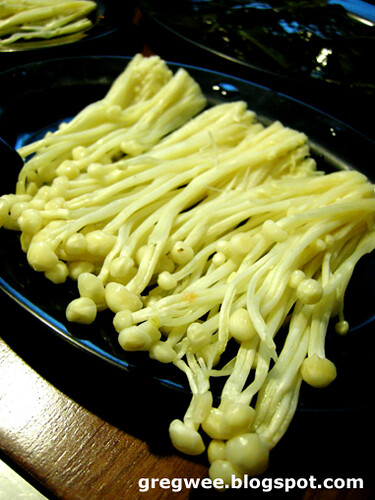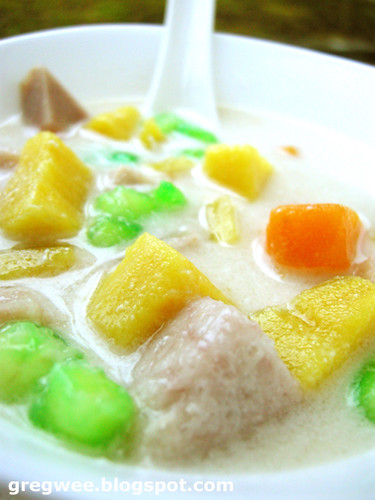 Most Malaysians grew up with this fantastic dessert. It's a thick, sweet broth made up of mostly yam & coconut, hence the name Bubur (broth). Don't ask me about the Cha Cha part. I don't know where that came from. But what I know is that Bubur Cha Cha was a delight for kids my generation. I don't know about kids nowadays. They only play computer games.
Most Malaysians grew up with this fantastic dessert. It's a thick, sweet broth made up of mostly yam & coconut, hence the name Bubur (broth). Don't ask me about the Cha Cha part. I don't know where that came from. But what I know is that Bubur Cha Cha was a delight for kids my generation. I don't know about kids nowadays. They only play computer games.I even had Bubur Cha Cha in Melbourne before but of course as with most South East Asian food there, it was sub-standard, to borrow my brother's term for any food that does not suit His Royal Highness' Majestic taste buds.
To eat nice Bubur Cha Cha is like eating sin. And this sin tastes really good with lots of sweetness & lemak (fats) in abundance.
350-400gm of yam, final weight after shaving off skin and cut into 1 cm cubes
400gm -500gm of assorted sweet potatos*, final weight after shaving off skin and cut into 1 cm cubes
300gm of coarse sugar
1 kg of coconut
4-5 pandan leaves
Pomegranate:
5 no of water chestnuts, skin off and cut in small cubes
little drops of pandan green
1) Skin off, wash and cut yam and sweet potatos into cubes. Steam until soft (If you squeeze the cubes lightly, it will crumble).
2) With 1 cup of water, squeeze the coconut for 500gm of 1st santan.
3) Add some more water to coconut until you get 1400gm of 2nd santan. If you dont have fresh ones, then use those packet liquid ones. For 1st santan, use 400gm of coconut milk with 100gm of water. For 2nd santan, use 700gm of coconut milk with 700gm of water.
4) Prepare Pomegranate: With a few tablespoon of sugar from the recipe, add 200gm of water and boil into sugar water. Coat chestnuts bits with some pandan green colour, followed by tapioca flour generously. Put coated chestnuts on a sift and shake off excess flour. Boil in a pot of water till transparent. Strain and put in sugar water. Set aside to be added later.
5) Bring rest of sugar, 2nd santan and pandan leaves to a very light boil and till sugar melted. Turn to low fire. Add steamed yam and sweet potatos dices, followed by 1st santan. Bring entire mixture to an almost boil or a very light boil. Do not let it goes boil completely otherwise the coconut will separate with water but without the almost boiling point, the mixture may turn sour bad faster. Add pomegranate mixture. Serve hot or chill before serving if you like it cold like me.
** Orange, yellow and purple-with-white/lighter-centre sweet potatos can be used. The orange type tends to turn mushy easily. So take care when steaming. Yellow potatos are really yummy and the texture is smooth, so you may want to use a little more of that & a smaller amount for the orange type.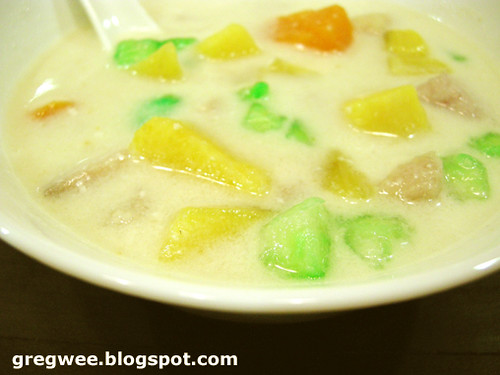
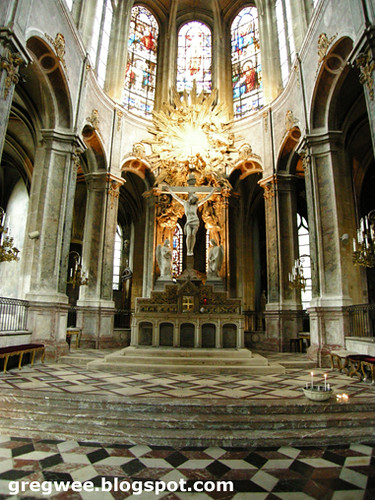 This is the Church of Saint-Merri. We were strolling along Rue Saint-Martin when we came across it.
This is the Church of Saint-Merri. We were strolling along Rue Saint-Martin when we came across it. The facade of the church was under renovation & was quite inconspicuous. We would have missed it if not for my killer tourist instincts.
The facade of the church was under renovation & was quite inconspicuous. We would have missed it if not for my killer tourist instincts.
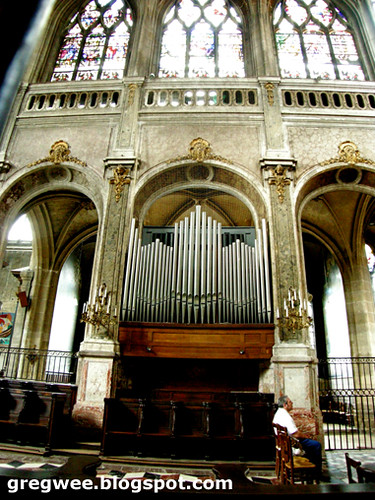 This beeautiful organ was reconstructed in 1781 by Cliquot, a famous organ builder. Of course there's no way I could have known this. Its from Wikkipedia.
This beeautiful organ was reconstructed in 1781 by Cliquot, a famous organ builder. Of course there's no way I could have known this. Its from Wikkipedia. The gothic interior architecture is just simply breathtaking & as with most churches, the place offers a quiet solitude from the hustle & bustle of the Parisians outside.
The gothic interior architecture is just simply breathtaking & as with most churches, the place offers a quiet solitude from the hustle & bustle of the Parisians outside.


 Being there, you can't help but be in awe at the grandeur & scale of things. It is first & foremost a place of worship, a spiritual sanctuary. The place is so silent that you can even hear your own thoughts & prayers. I know what I prayed for, but I hope Nee was not asking for a bigger kitchen again.
Being there, you can't help but be in awe at the grandeur & scale of things. It is first & foremost a place of worship, a spiritual sanctuary. The place is so silent that you can even hear your own thoughts & prayers. I know what I prayed for, but I hope Nee was not asking for a bigger kitchen again.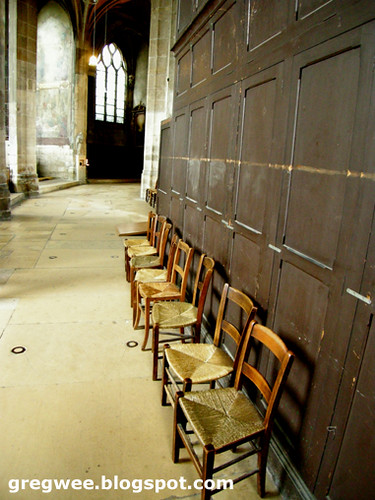

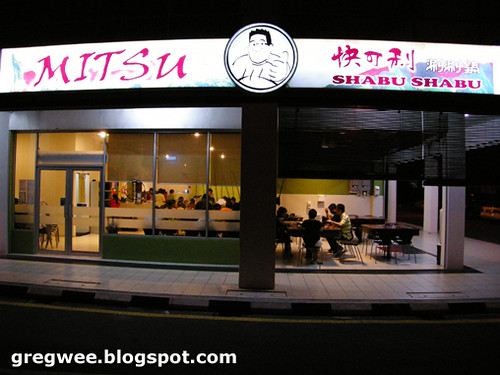

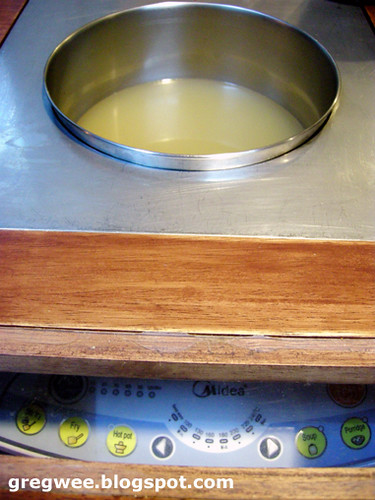

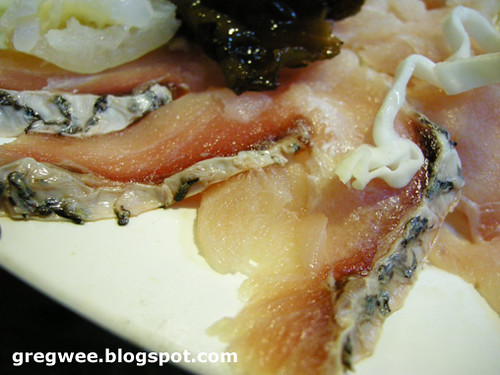
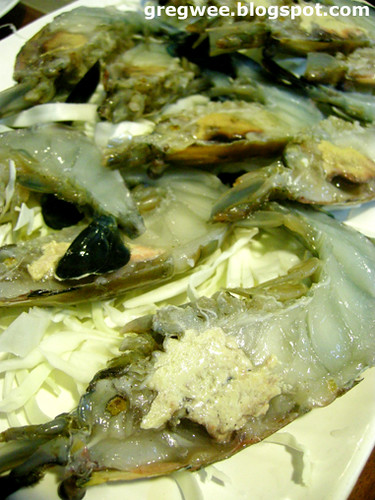 This item of big head prawn is expensive. We ordered as individual platter. Cost about RM72 for about 6-7 prawns. Indulgence for the Melbourne boy.
This item of big head prawn is expensive. We ordered as individual platter. Cost about RM72 for about 6-7 prawns. Indulgence for the Melbourne boy.
